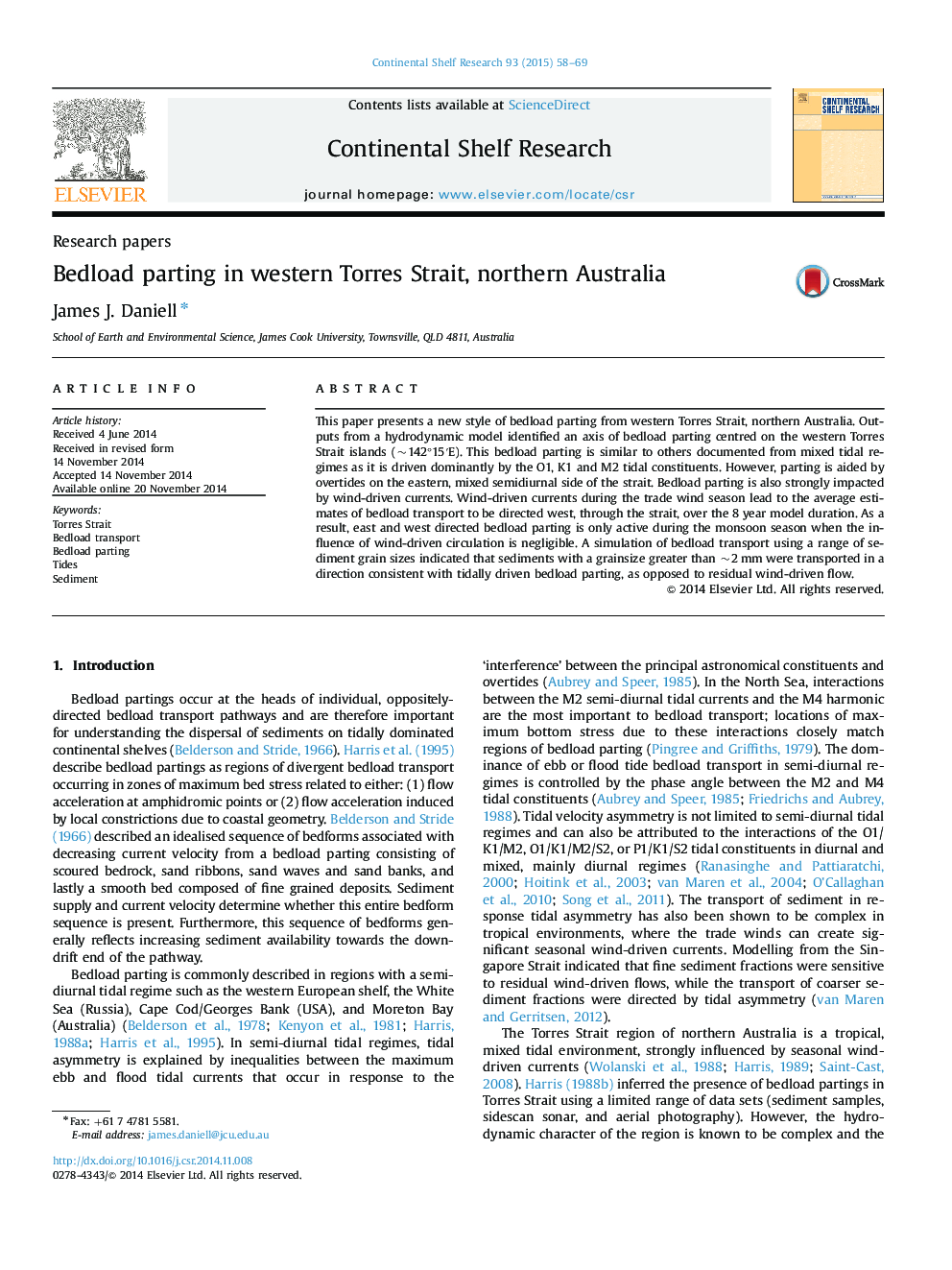| Article ID | Journal | Published Year | Pages | File Type |
|---|---|---|---|---|
| 4531771 | Continental Shelf Research | 2015 | 12 Pages |
•An axis of bedload parting is centred on the western Torres Strait islands.•Bedload parting is driven dominantly by the O1, K1 and M2 constituents.•Bedload parting is seasonal due to the influence of wind driven currents.•Net transport of sediment finer than 2 mm is directed west by residual currents.•Net transport of coarse sediment is divergent and driven by bedload parting.
This paper presents a new style of bedload parting from western Torres Strait, northern Australia. Outputs from a hydrodynamic model identified an axis of bedload parting centred on the western Torres Strait islands (~142°15′E). This bedload parting is similar to others documented from mixed tidal regimes as it is driven dominantly by the O1, K1 and M2 tidal constituents. However, parting is aided by overtides on the eastern, mixed semidiurnal side of the strait. Bedload parting is also strongly impacted by wind-driven currents. Wind-driven currents during the trade wind season lead to the average estimates of bedload transport to be directed west, through the strait, over the 8 year model duration. As a result, east and west directed bedload parting is only active during the monsoon season when the influence of wind-driven circulation is negligible. A simulation of bedload transport using a range of sediment grain sizes indicated that sediments with a grainsize greater than ~2 mm were transported in a direction consistent with tidally driven bedload parting, as opposed to residual wind-driven flow.
